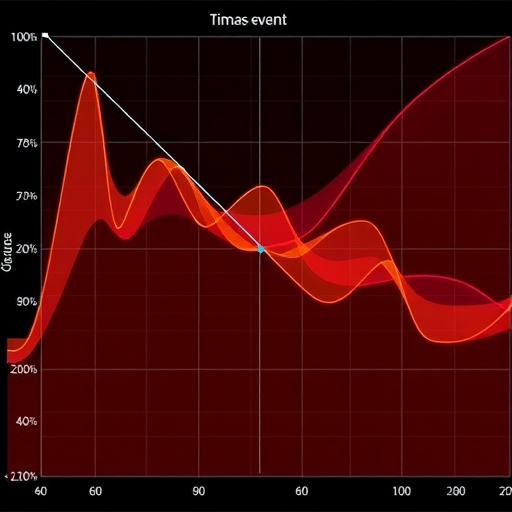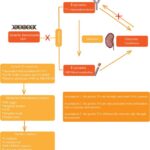
In the evolving landscape of Parkinson’s disease research, assessing the true efficacy of potential therapeutics has been an enduring challenge. A groundbreaking study published in npj Parkinson’s Disease by Pagano, Trundell, Simuni, and colleagues introduces a powerful statistical approach that promises to refine our understanding of therapeutic benefits by mitigating the confounding effects of symptomatic therapies during clinical trials. This methodological advancement, centered on a time-to-event analysis framework, holds the potential to reshape clinical trial design and interpretation, ushering in a new era of precision in evaluating disease-modifying treatments for Parkinson’s.
Parkinson’s disease, a progressive neurodegenerative disorder marked by motor and non-motor symptoms, has long eluded curative interventions. Current therapeutic strategies primarily manage symptoms, notably through dopaminergic medications, which can mask or distort the underlying disease progression in clinical studies. This symptomatic management complicates the assessment of investigational drugs aimed at altering the disease course. Traditional analyses often struggle to differentiate between symptomatic relief and genuine neuroprotective effects, thereby obscuring the true potential of new treatments.
The novel study tackles this critical issue through the application of time-to-event analysis. By focusing on the timing of clinically meaningful events rather than solely relying on continuous rating scales or fixed time-point comparisons, this approach accounts for both the therapeutic impact on symptom management and the progression of underlying pathology. This distinction is crucial, as symptomatic therapies can artificially inflate efficacy signals, leading to overestimated or misinterpreted treatment benefits.
.adsslot_6vI9UBfi5F{width:728px !important;height:90px !important;}
@media(max-width:1199px){ .adsslot_6vI9UBfi5F{width:468px !important;height:60px !important;}
}
@media(max-width:767px){ .adsslot_6vI9UBfi5F{width:320px !important;height:50px !important;}
}
ADVERTISEMENT
Central to the innovation is the concept of ‘event’ definition in Parkinson’s trials. Instead of measuring subtle score changes susceptible to symptomatic therapy influence, events are delineated as clinically relevant milestones such as initiation of additional therapy, sustained motor worsening, or need for increased care. By using these discrete, objective endpoints, time-to-event analyses minimize symptomatic confounding. The methodology thus enables a more direct observation of disease modification by isolating progression dynamics from symptomatic fluctuations.
The statistical rigor of this approach also lends itself to enhanced trial efficiency. Time-to-event frameworks inherently accommodate censored data—patients who have not yet experienced an event by the study’s end—allowing more flexible and powerful models compared to conventional longitudinal analyses. This flexibility can accelerate trial timelines and reduce required sample sizes without compromising the robustness of findings, a significant advantage given the prolonged progression typical of Parkinson’s disease.
Importantly, the application of this analytical strategy within existing clinical datasets demonstrated a clear mitigation of symptomatic therapy impact. The authors’ comprehensive examination showed that when symptomatic treatments’ influence was accounted for, purported therapeutic benefits of some investigational agents diminished, underscoring the risk of overinterpretation in prior trials. Conversely, therapies demonstrating benefit under the time-to-event model likely reflect true disease modification, providing a more reliable foundation for regulatory approval and clinical adoption.
The adoption of time-to-event analysis could also harmonize outcome reporting across Parkinson’s trials, which historically have varied widely in endpoints and analytic techniques. Standardization would enhance the comparability of studies and meta-analyses, fostering a cumulative knowledge base and informing better clinical decision-making. This development aligns with broader initiatives emphasizing reproducibility and transparency in biomedical research.
Molecularly, Parkinson’s disease progression is believed to involve complex pathogenic cascades including alpha-synuclein aggregation, mitochondrial dysfunction, and neuroinflammation. However, clinical manifestation variability complicates early detection of disease-modifying effects. By focusing on distinct clinical milestones, time-to-event analysis may better capture the heterogeneous trajectories underlying Parkinson’s, facilitating tailored therapeutic interventions and potentially guiding biomarker discovery for stratified medicine.
Another critical implication of this research lies in its potential to steer future therapeutic development towards interventions that genuinely alter disease biology rather than merely palliating symptoms. This shift could attract increased investment and innovation, accelerating breakthroughs against a condition that affects millions globally and places substantial socioeconomic burdens on individuals and healthcare systems.
The study also raises important considerations for trial design, such as the selection of appropriate event definitions tailored to different disease stages or therapeutic mechanisms. Crafting these definitions requires multidisciplinary collaboration, integrating clinical expertise with statistical acumen, and patient-centered perspectives to ensure relevance and feasibility.
Despite promising results, the implementation of time-to-event analysis is not without challenges. Accurate event ascertainment demands rigorous follow-up and reliable measurement standards, which might increase operational complexity and costs. Moreover, statistical modeling assumptions require careful validation within Parkinson’s populations to avoid introducing new biases.
Nevertheless, the methodological framework showcased by Pagano and colleagues represents a transformative stride towards disentangling symptomatic relief from disease modification signals. This advancement is poised to refine therapeutic evaluations, informing both clinicians and researchers striving to improve outcomes for Parkinson’s patients.
As the field embraces this analysis strategy, we may anticipate more nuanced interpretations of trial data, aiding regulatory bodies in making informed approval decisions and guiding personalized treatment strategies. Ultimately, the hope is that this evolution in clinical trial methodology will catalyze the long-sought breakthroughs in Parkinson’s disease therapeutics.
The broader implications extend beyond Parkinson’s disease, as many neurological and chronic disorders face similar analytic challenges due to symptomatic therapies in trials. Time-to-event analysis may thus become a cornerstone technique, enhancing the fidelity of clinical research across domains.
In conclusion, this innovative statistical paradigm holds promise not only for enhancing trial accuracy but also for inspiring confidence among patients, clinicians, and researchers. By peeling back the layers of symptomatic masking, it illuminates the true horizon of disease modification, paving the way for more effective therapies and improved quality of life for those battling Parkinson’s disease.
Subject of Research: Therapeutic benefit assessment in Parkinson’s disease clinical trials using time-to-event analysis to mitigate confounding effects of symptomatic therapy.
Article Title: Time-to-event analysis mitigates the impact of symptomatic therapy on therapeutic benefit in Parkinson’s disease trials.
Article References:
Pagano, G., Trundell, D., Simuni, T. et al. Time-to-event analysis mitigates the impact of symptomatic therapy on therapeutic benefit in Parkinson’s disease trials. npj Parkinsons Dis. 11, 193 (2025). https://doi.org/10.1038/s41531-025-01041-9
Image Credits: AI Generated
Tags: challenges in Parkinson’s disease researchdopaminergic medications and Parkinson’sevaluating disease-modifying therapiesimproving clinical trial design for Parkinson’sinnovative statistical approaches in clinical trialsmitigating symptomatic therapies in clinical studiesneuroprotective effects assessmentParkinson’s disease progression evaluationprecision medicine for Parkinson’s treatmentstatistical methods in neurodegenerative researchtherapeutic efficacy in Parkinson’s diseasetime-to-event analysis in Parkinson’s trials



